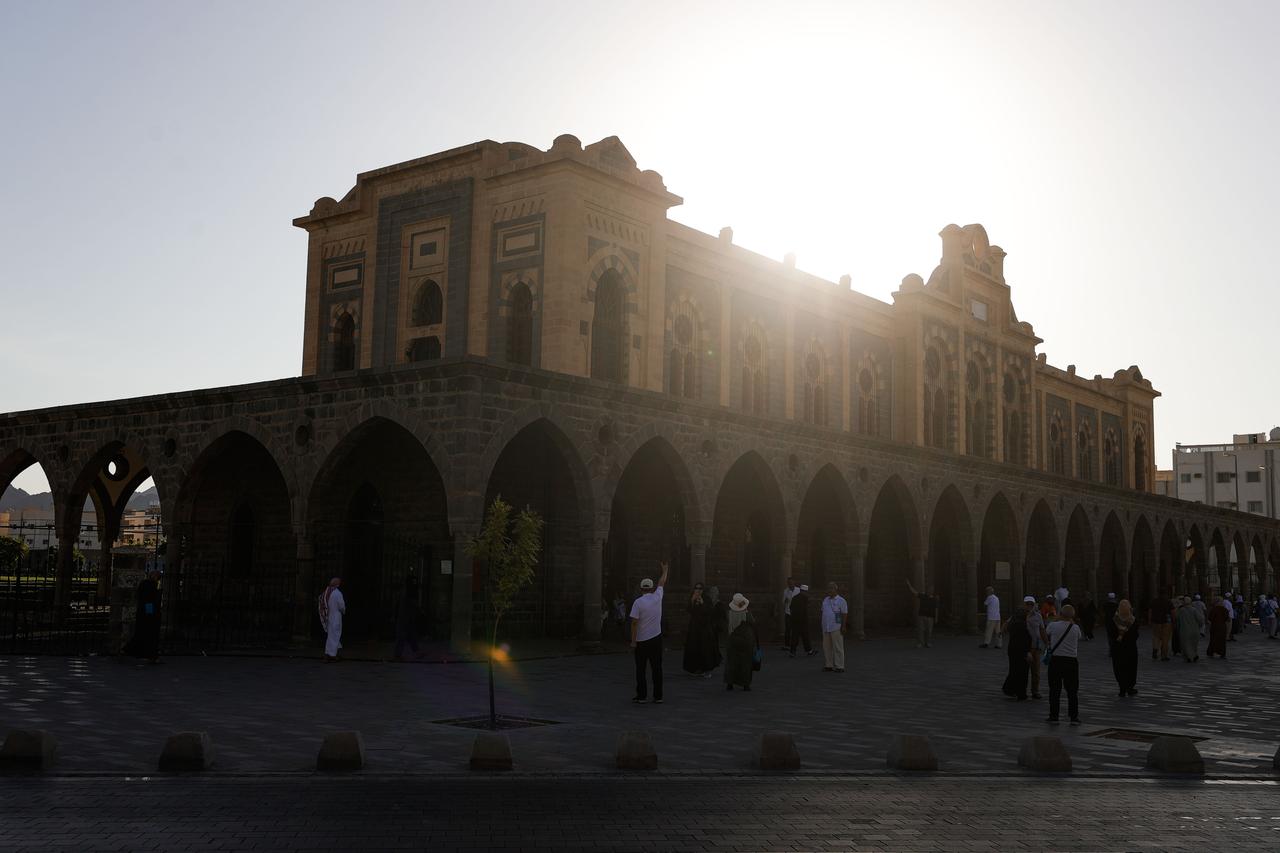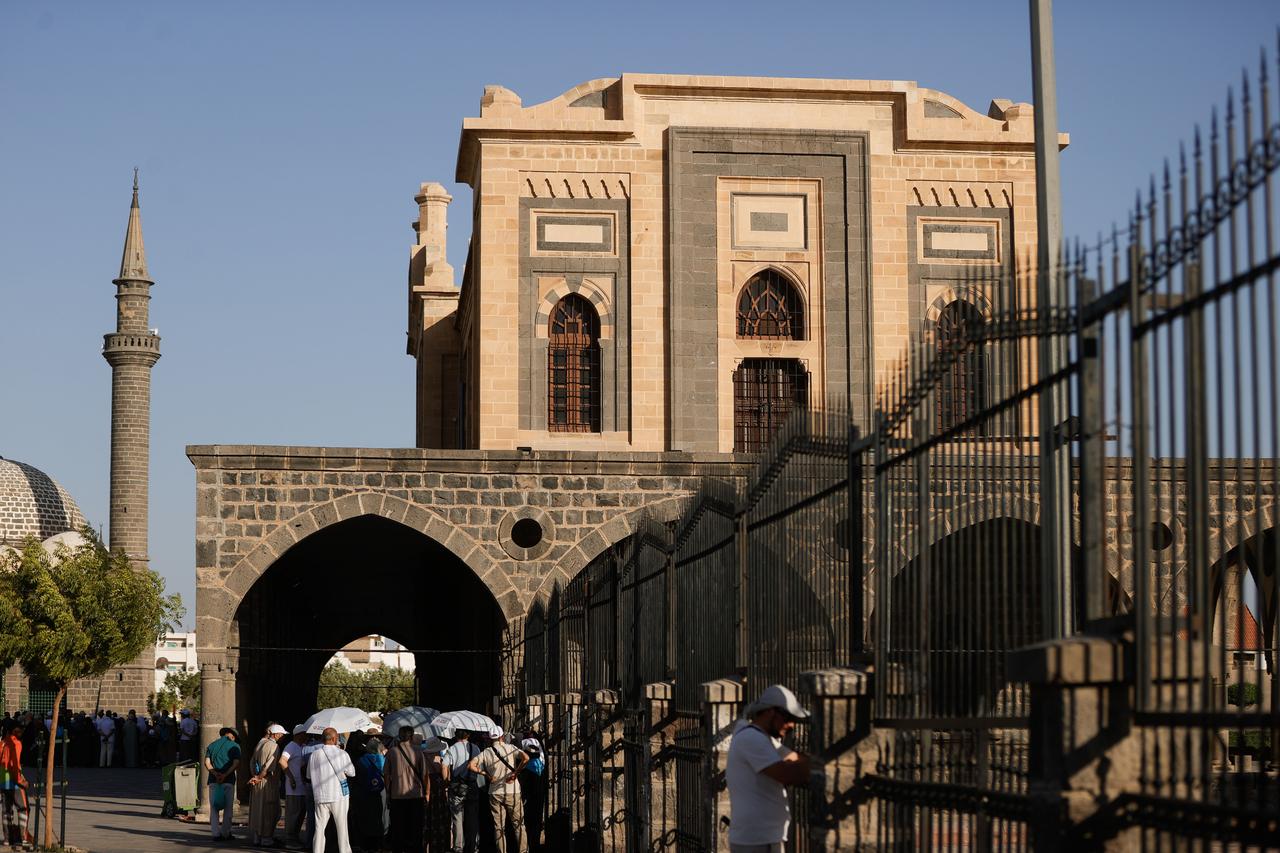
Although currently closed for restoration, the historic Medina Train Station—once the final stop of the legendary Hejaz Railway built during the reign of Ottoman Sultan Abdulhamid II—continues to attract large groups of pilgrims visiting the holy city.
Constructed to shorten the pilgrimage route between Damascus and Medina, the station stands as a proud symbol of Ottoman engineering and spiritual service. Next to it, the Amberiye Mosque, built using exactly 6,666 stones to represent the number of verses in the Qur’an, serves as a peaceful sanctuary for visitors.
Despite its closure, pilgrims gather in front of the station to take photographs and listen to detailed briefings provided by group leaders on its historical and architectural significance. Many also stop to pray inside the Amberiye Mosque, reflecting on the heritage left by their ancestors.

Sinan Kalemli, a pilgrim from the Netherlands visiting with the Dutch Turkish Federation, described his emotional connection to the site. “Seeing with our own eyes how grand our Ottoman ancestors were is a deeply moving experience,” Kalemli said. “It is our responsibility to keep their legacy alive for future generations.”
Kalemli added that completing the Hajj pilgrimage smoothly filled him with gratitude. “This station and mosque represent more than architecture—they are monuments of dedication and faith.”

Ayse Demir, another pilgrim from the Netherlands, said she had long planned her pilgrimage journey. “We made the decision last year, and now here we are,” she said. “Seeing an Ottoman structure like this fills a Turkish heart with pride.”
Demir reflected on the spiritual richness of her experience, praising the sense of connection she felt with Türkiye’s historical roots. “We had a very fulfilling Hajj. Witnessing the remnants of our heritage adds a unique layer of emotion.”
The Medina Train Station and the adjacent Amberiye Mosque remain powerful reminders of the Ottoman Empire’s influence on Islamic pilgrimage infrastructure, as well as Türkiye’s enduring connection to the holy cities of Islam.